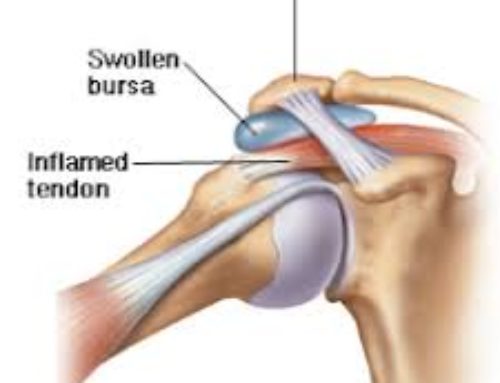If you’re dealing with numbness or tingling in your arm, it’s important to get an accurate diagnosis and address the problem as soon as possible. One common condition that causes these symptoms is thoracic outlet syndrome, a troublesome and often controversial shoulder problem. In this article we’ll break down the basics of what thoracic outlet syndrome is, some important causes and considerations, and the best treatment options available.
What is Thoracic Outlet Syndrome?
The term thoracic outlet syndrome (TOS) describes compression of the nerves or blood vessels deep in the shoulder that run through a specific opening known as the thoracic outlet.
When the nerves deep in the shoulder become compressed, this can cause symptoms like numbness, tingling, pain, and weakness. This is because nerves are responsible for sending sensation and motor function signals throughout the body, and compression of the nerves can slow or stop normal signaling. The nerve structure most affected by compression in the thoracic outlet is called the brachial plexus, which branches off into several other nerves of the arm.
Although less common, compression of the shoulder’s deep blood vessels can also cause symptoms of numbness, tingling, and pain over time. Since blood vessels are responsible for delivering important nutrients and removing waste, impaired blood supply to the arm can cause things like swelling, temperature changes (feeling colder), and discoloration of the arm or hand.
Depending on whether nerves or blood vessels are affected, TOS is classified as neurological (affecting nerves) or vascular (affecting arteries and veins). While vascular TOS is rare compared to neurological TOS, it’s important to get an accurate diagnosis for the best outcome.
What Causes Thoracic Outlet Syndrome?
The exact causes of TOS are debated and often vary from person to person, but there are some common factors that can contribute to this problem.
Posture
The way you sit and stand throughout your day can affect your shoulder. For example, sitting with a very slouched posture can contribute to muscle tension in your neck or limitations in nerve mobility, which can create more compression in your thoracic outlet. Certain clothing or accessories, such as a tight bra or heavy backpack, can also contribute to TOS.
Muscle Weakness or Imbalance
When muscles in your arm, shoulder, or neck become too weak or too strong, it can put your shoulder into a compressed position due to imbalanced pulling from muscles surrounding the joint. While strong muscles are typically healthy muscles, it’s important to exercise different muscle groups evenly to help prevent imbalances in strength.
Body Mass
Certain types of body traits can contribute to increased compression in the shoulder. For example, a bodybuilder or rower who exercises their back muscles extremely hard may end up with too much muscle mass near their armpit, which can push against other structures in the shoulder. Similarly, a woman with more weight on the front of her chest may struggle with extra slouching and stress through her shoulders, which could increase compression of the thoracic outlet.
Keep in mind that TOS can also be caused by genetics, injuries, and certain medical conditions. What’s most important is identifying the problem and getting a proper diagnosis to help guide your treatment.
How is Thoracic Outlet Syndrome Diagnosed?
Correctly diagnosing TOS starts with a thorough assessment from your trusted health professional. This should include a discussion of your health history – including any previous injuries – and a detailed physical examination that involves various tests to rule out other possible conditions.
Here are a few common tests used to diagnose TOS:
Roos Test
In this test you will hold your elbow at shoulder level while opening and closing your fingers and downward pressure is added on your shoulder. If your symptoms are reproduced within 90 seconds, the test is positive.
Adson’s Test
In this test you will be asked to rotate your head while lifting your chin toward your symptomatic side. If your pulse is weakened or disappears, the test is positive.
It’s important to know that neither of these tests confirm TOS in isolation, but a positive test can make TOS more likely. In all cases, all of your physical findings and history should be considered carefully when deciding on a diagnosis. After diagnosing TOS, it’s important to get started with a good treatment plan.
What Treatments Are Available for Thoracic Outlet Syndrome?
In most cases, TOS is managed using conservative treatments such as physical therapy. Your physical therapist will prescribe targeted exercises to help you strengthen the muscles of your neck, back, and shoulder to improve your posture and reduce compression on sensitive structures. In some cases, manual therapy may also be used to help relieve muscle tension and improve circulation within your shoulder. Other conservative treatments such as massage and acupuncture may be recommended to help manage your symptoms and improve your participation in regular exercise.
When symptoms are difficult to control, medications can be used to help manage TOS. Certain medications, such as anti-inflammatories and painkillers, may be prescribed in the short-term to help you get through your day and keep up with self-care activities. In some cases, these medications can be used in conjunction with physical therapy to improve your tolerance for treatments and exercise.
Although less common, a surgery to decompress the thoracic outlet may be recommended if conservative treatments and medication have been ineffective. The exact technique used will vary depending on whether neurogenic or vascular TOS is being treated, however, these procedures are very invasive and involve a lengthy recovery period. Even after surgery, treatments such as physical therapy are recommended during recovery to ensure the best outcomes possible.
Thoracic outlet syndrome can be challenging to live with, but with education and expert treatment, many people make a full recovery. With the right action plan, you can get your symptoms under control and get back to your favorite activities.
How Can Working With An Expert at DPT Help You Treat Your Thoracic Outlet Syndrome?
Whether you’re dealing with a long-standing case of thoracic outlet syndrome or just starting to notice new symptoms that are concerning you, you can get the help you need at DPT. Here’s what you can expect:
- A treatment plan tailored to your history, lifestyle, and specific goals.
- A thorough understanding of your condition, and how to care for yourself long term.
- Specialized activity recommendations to help you keep doing the things that you love.
- Coaching and support from an experienced team that cares about your progress.
If you’re ready to get started on your path to recovery, schedule a discovery visit today.
References






